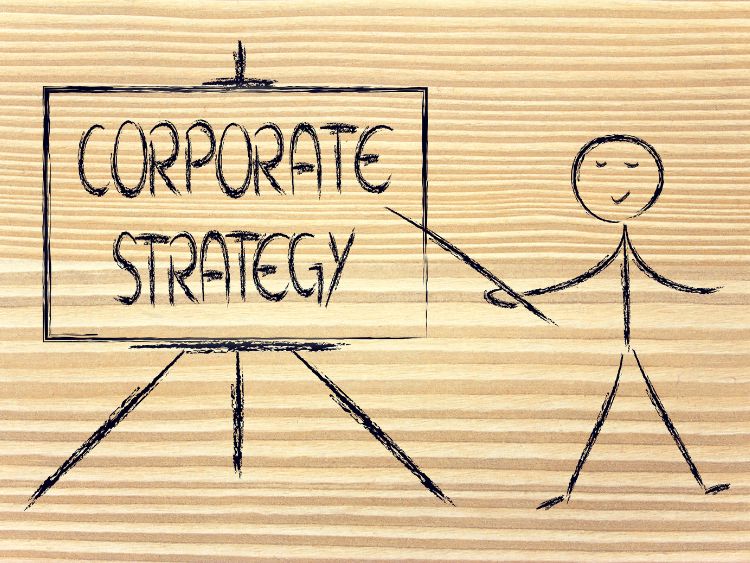Creating a compelling corporate strategy resume can feel like navigating a labyrinth. With so much riding on a single document, you must capture your experience and skills effectively. Whether you’re an experienced strategist or a newcomer to the field, this guide will help you design a resume that stands out in a crowded job market.
So, you’re looking to craft a corporate strategy resume that not only captures your qualifications but also resonates with hiring managers? You’re in the right place! Let’s dive into the essential elements of a stellar resume, from structuring your content to highlighting your strategic prowess.
Understanding the Role
Before we get into the nitty-gritty of resume writing, let’s clarify what a corporate strategist does. Corporate strategy involves planning and directing a company’s long-term goals. This means analyzing market trends, overseeing mergers and acquisitions, and driving growth initiatives. The role demands a mix of analytical skills, leadership, and forward-thinking.
Key Elements of a Corporate Strategy Resume
1. Contact Information
Start with your contact details at the top. Make sure to include:
- Full Name
- Phone Number
- Email Address
- LinkedIn Profile
- Personal Website or Portfolio (if applicable)
2. Professional Summary
Your professional summary should be a snapshot of your career highlights. Keep it concise and impactful, focusing on your key strengths and achievements.
Example: “As a seasoned corporate strategist with over 10 years of experience in driving business growth and market expansion, I excel in formulating and executing strategic initiatives that increase profitability and market share. Adept at analyzing complex data and leading cross-functional teams to success.”
3. Core Competencies
List your core competencies in bullet points. This section should showcase your primary skills and areas of expertise.
- Strategic Planning
- Market Analysis
- Mergers and Acquisitions
- Business Development
- Financial Modeling
- Project Management
- Leadership and Team Management
4. Professional Experience
Detail your work history, starting with your most recent job. For each position, include the company name, job title, and dates of employment. Use bullet points to highlight your responsibilities and achievements.
Example:
Senior Corporate Strategist, XYZ Corporation January 2018 – Present
- Led a team of 10 in developing and implementing corporate strategies that increased revenue by 20% annually.
- Conducted market research and competitive analysis to inform strategic decisions.
- Oversaw the successful acquisition of three companies, enhancing the company’s market position.
- Developed financial models to project future business scenarios and guide investment decisions.
- Collaborated with senior management to align strategic initiatives with company goals.
Corporate Strategy Analyst, ABC Inc. June 2014 – December 2017
- Assisted in the creation and execution of strategic plans that resulted in a 15% increase in market share.
- Analyzed industry trends and provided insights to support strategic decision-making.
- Prepared detailed reports and presentations for senior executives.
- Managed cross-functional projects, ensuring alignment with strategic objectives.
5. Education
Include your academic background, listing degrees in reverse chronological order.
MBA in Strategic Management Harvard Business School, 2013
Bachelor of Science in Business Administration University of California, Berkeley, 2009
6. Certifications and Professional Development
Highlight relevant certifications and professional development courses.
- Certified Strategic Planner (CSP), Association for Strategic Planning
- Mergers and Acquisitions Certification, New York Institute of Finance
7. Technical Skills
Detail any technical skills that are relevant to the role.
- Proficient in Microsoft Office Suite (Excel, PowerPoint, Word)
- Experience with financial modeling software (e.g., IBM Planning Analytics, Oracle Hyperion)
- Familiarity with data analysis tools (e.g., Tableau, SAS)
Tips for Crafting an Effective Corporate Strategy Resume
Tailor Your Resume
Customize your resume for each job application. Highlight the skills and experiences that are most relevant to the specific role.
Use Action Verbs
Begin each bullet point with a strong action verb, such as “led,” “developed,” “analyzed,” or “managed.”
Quantify Achievements
Whenever possible, quantify your achievements to provide concrete evidence of your impact. For example, “Increased revenue by 20%” is more compelling than “Increased revenue.”
Keep It Concise
While it’s important to provide detailed information, keep your resume concise and to the point. Aim for a maximum of two pages.
Proofread
Ensure your resume is free of grammatical errors and typos. Consider using a tool like Grammarly for additional assistance.
FAQs
What should I include in my professional summary?
Your professional summary should be a brief overview of your career highlights, focusing on your key strengths and achievements. It’s your elevator pitch to potential employers.
How can I make my resume stand out?
To make your resume stand out, tailor it to each job application, use strong action verbs, quantify your achievements, and ensure it’s well-organized and error-free.
How long should my resume be?
Aim for a maximum of two pages. Be concise and only include relevant information.
Should I include a cover letter?
Yes, always include a cover letter. It provides an opportunity to further highlight your qualifications and express your interest in the role.
How do I handle employment gaps on my resume?
Be honest about employment gaps. You can briefly mention the reason for the gap in your cover letter or during the interview. Focus on how you used that time productively, such as through professional development or volunteer work.
Summary
Creating a winning corporate strategy resume involves highlighting your strategic thinking, leadership, and analytical skills. By tailoring your resume to the specific job, using action verbs, quantifying achievements, and ensuring it’s error-free, you’ll be well on your way to landing your next strategic role.
Authoritative Links
- https://www.linkedin.com/pulse/7-essential-tips-creating-corporate-strategy-resume-joe-smith
- https://www.corporatestrategy.org/career-tips/resume-guide
- https://www.hbr.org/2019/08/how-to-write-a-great-resume-for-a-corporate-strategy-role
- https://www.indeed.com/career-advice/resumes-cover-letters/strategy-resume-examples
By following these guidelines and incorporating the tips provided, you’ll craft a corporate strategy resume that captures your experience and makes a lasting impression on hiring managers.

